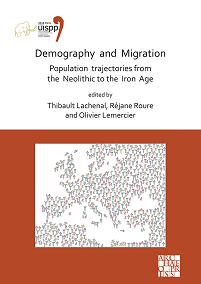 Actualités
Actualités 

 |
[Néolithique / Protohistoire / Libre accès] Thibault Lachenal, Réjane Roure & Olivier Lemercier (2020) - Demography and Migration : Population trajectories from the Neolithic to the Iron Age : Proceedings of the XVIII UISPP World Congress (4-9 June 2018, Paris, France), Volume 5 : Sessions XXXII-2 and XXXIV-8, Oxford, Archaeopress, 180 p. EAN 9781789696653 / Epublication ISBN 9781789696660, 35,00 € / 0,00 €. This volume presents the combined proceedings of two complementary sessions of the XVIII UISPP World Congress (4–9 June 2018, Paris, France): Sessions XXXII-2 and XXXIV-8. These sessions aimed to identify demographic variations during the Neolithic and Bronze Age and to question their causes while avoiding the potential taphonomic and chronological biases affecting the documentation. It appears that certain periods feature a large number of domestic and/or funeral sites in a given region and much fewer in the following periods. These phenomena have most often been interpreted in terms of demographics, habitat organization or land use. They are sometimes linked to climatic and environmental crises or historical events, such as population displacements. In the past few years, the increase in large-scale palaeogenetic analyses concerning late prehistory and protohistory has led to the interpretation of genomic modifications as the result of population movements leading to demographic transformations. Nevertheless, historiography demonstrates how ideas come and go and come again. Migration is one of these ideas: developed in the first part of the XX century, then abandoned for more social and economic analysis, it recently again assumed importance for the field of ancient people with the increase of isotopic and ancient DNA analysis. But these new analyses have to be discussed, as the old theories have been; their results offer new data, but not definitive answers. During the sessions, the full range of archaeological data and isotopic and genetic analysis were covered, however for this publication, mainly archaeological perspectives are presented. . |


